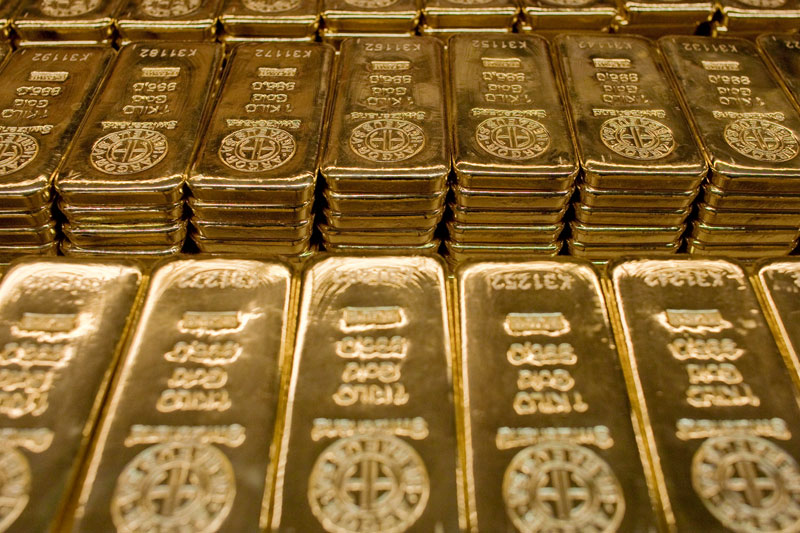Investing.com - Gold gained in Asia, rebounding from an overnight fall, as investors turned to safe-have assets.
On the Comex division of the New York Mercantile Exchange gold for February delivery rose 0.52% to $1,092.40 a troy ounce.
Silver for March delivery eased 0.22% to $14.105 a troy ounce.
Copper for March delivery gained 0.68% to $1.971 a pound.
In Japan, the CGPI (corporate goods price index) is expected to show a fall of 3.5% year-on-year in December. As well, core machinery orders for November year-on-year likely fell 7.9%.
In Australia, comes jobs data including employment change with a drop of 12,500 jobs seen, and the unemployment rate expected up to 5.9% from 5.8%.
Overnight, gold inched up halting a three-day losing streak, as stronger than expected trade data in China bolstered the value of the precious metal.
Gold likely gained support at $1,046.20, the low from December 3 and was met with resistance at $1,162.00, the high from Oct. 29.
On Wednesday morning, China's General Administration of Customs reported that its exports fell 1.4% on annual basis in December, considerably less than analysts' forecasts for a drop of 8.0%. Export levels throughout China have received a great deal of attention at the start of the new year after the People's Bank of China (PBOC) opened 2016 by devaluing the yuan by more than 1.5% last week. For the month of December, Chinese exports also strongly outperformed neighbors in Taiwan and South Korea.
Chinese imports, meanwhile, plunged by 7.6%, moving lower for the 14th consecutive month. The slide, however, wasn't as precipitous as feared after a drop of nearly 9% in November. Analysts expected a monthly decline of 11.5%. As a result, China produced a trade surplus of $60.09 billion above expectations of $53.0 billion last month.
Investors await the release of China's fourth-quarter and full-year GDP data next week for further indications on growth levels in the world's second-largest economy. On Tuesday, China's top economic planning agency said it expects that the Chinese economy grew by 7% in 2015, down from 7.3% a year earlier. The figure would represent the slowest pace of economic growth in China in a quarter century.
China is the world's largest producer of gold and the second-largest consumer of the precious metal behind India.
Elsewhere, Federal Reserve of Boston president Eric Rosengren noted that the rout in Chinese equities in combination with persistently weak oil prices has led to mounting concerns of slowing global growth. The factors, Rosengren added, could compel the Fed to slow its pace of tightening this year.
Rosengren's comments provide further ambiguity on whether the U.S. central bank could raise short-term interest rates before the end of the first quarter. Last week, Fed vice chair Stanley Fischer said in an interview with CNBC that economic conditions could be appropriate for the Fed to approve as many as four rate hikes this year.
Any upward moves are viewed as bearish for gold, which struggles to compete with high-yield bearing assets in rising rate environments.
